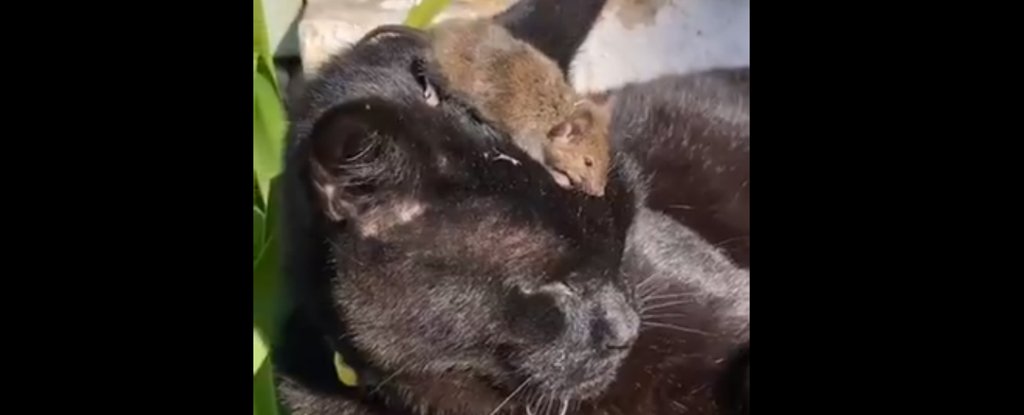Products You May Like
While the rest of the world continues to tackle the global pandemic, in eastern Australia, waves of mice are flooding farms and towns.
For months now, this plague has been wreaking havoc on crops, damaging electrical wires in buildings, and even biting hospital patients, leaving a stench of rodent urine and feces in its wake.
The mice are getting into drinking water supplies, making some people sick, and decimating hundreds of thousands of dollars worth of crops grown by farmers who have already endured years of drought, not to mention the pandemic.
The mouse plague just gets worse- mice pour out of a temporary silo and into an opportunistic trap near Dubbo. Sarah Pye was horrified by the scene – she says she’s “devastated, disgusted and done.” She says “after such a boomer of a season after drought, to lose it all is awful” pic.twitter.com/6bfzprY67j
— Lucy Thackray (@LucyThack) May 18, 2021
While this may sound extreme, mouse plagues are actually semi-regular in Australia, thanks to a confluence of factors.
House mice (Mus musculus) are an introduced species on the continent, yet very well adapted to endure Australia’s harsh years of dry droughts, thriving once conditions become favorable.
“A single pair of mice can give rise to 500 mice in a breeding season,” explains Steve Henry who is a research officer at Australia’s national science agency, the CSIRO.
However, outbreaks of this scale are rarer, he said.
We’re at the stage of the mouse plague even cats aren’t phased pic.twitter.com/5zXQR9MVOX
— Lucy Thackray (@LucyThack) April 27, 2021
“We’ve had a very wet summer resulting in heavy crops and vegetation growth leading to massive amounts of available food for mice,” explained Charles Sturt University environmental scientist Maggie Watson.
“Add to that a very mild autumn, and these mice are breeding in plague proportions.”
Unfortunately, the most effective defense farmers and residents have against this furry ravenous horde is poison. The government in the state hardest hit, New South Wales, has now sought urgent approval from the Commonwealth regulatory body for a second-generation pesticide called bromadiolone.
But scientists are warning that widespread use of this chemical, usually restricted to deployment in and around buildings, will just cause more harm.
“Second-generation rodenticides can saturate the entire food web, affecting everything from slugs to fish,” Edith Cowan University wildlife ecologist Robert Davis and colleagues wrote for The Conversation.
Their research found the poison in frog-eating tiger snakes, omnivorous skinks that eat vegetation and snails, and a mouse-eating snake with five different poisons.
“Many reptiles – natural mice predators – will also bioaccumulate rodenticides, and as reptiles seem to be able to survive a bit longer after rodenticide uptake, they themselves then become ‘toxic time bombs’, waiting to poison any predator that might eat them,” said Curtin University conservation biologist Bill Bateman.
“First-generation rodenticides work more slowly but also break down more quickly and so have less of an impact on native animals that might eat poisoned mice.”
Even desperate farmers are reluctant to resort to using bromadiolone, preferring to stick to the safer zinc phosphide option, reports ABC’s Lucy Thackray, who has been closely following the outbreak while the mice have infested her own home.
Some farmers, like Ryan Milgate, are also concerned that trying to keep Australia’s notorious dust storms at bay is contributing to the problem. This is done by keeping the base of previous crops in the ground to hold the top soil down, which also ends up providing better breeding conditions for the mice.
Hi Linda, I hope this video might help explain how the mouse problem has got to the extent it has. pic.twitter.com/OL9IOnpVpB
— Ryan Milgate (@ryan_milgate) May 19, 2021
“Treating house mouse plagues as though the ecosystem were unbalanced isn’t really a feasible option in Australia, they are simply something we have to live through,” said Watson, explaining that long before mice landed on the shores, Australia had antechinus plagues feasting on locust plagues.
Generally, environmental ‘boom and bust’ cycles are natural in Australia due to the continent’s unpredictable rain patterns.
“Australia should invest in research for grain storage facilities that are less permeable to mice,” Davis and colleagues suggest, to try to minimize the food available to the plague mice.
There’s still no assistance for farmers dealing with the immense costs and damage associated with the mouse plague, which isn’t improving. It’s a huge blow as they’re still very much in recovery mode from the drought. This was filmed by Brody Roche in Tottenham in central NSW. pic.twitter.com/M0Xs3u3DrW
— Lucy Thackray (@LucyThack) March 28, 2021
Many birds of prey that naturally feed on mice – such as black-shouldered kites, boobook owls, and tawny frogmouths – are in decline due to loss of habitat from increasing urbanization and broad-acre monoculture cropping, explains Watson.
So looking after habitat structures where predators live, such as rocky outcrops and remnant vegetation, is also vital.
“Birds of prey, native carnivores, snakes and large lizards – they are our front line defense against mouse plagues,” said Bateman.
Hence, poisoning these predators will just make the control of mouse populations more difficult in the long term.
“You could completely reduce the population of birds of prey,” Watson told CNN. “It could take 15 to 20 years for them to start coming back, and meanwhile we don’t have any natural controls for the next mouse plague that comes along.”
Scientists are looking into ways to better manage Australian mouse plagues. Meanwhile those in the path of the current destructive wave of mammals need support.
